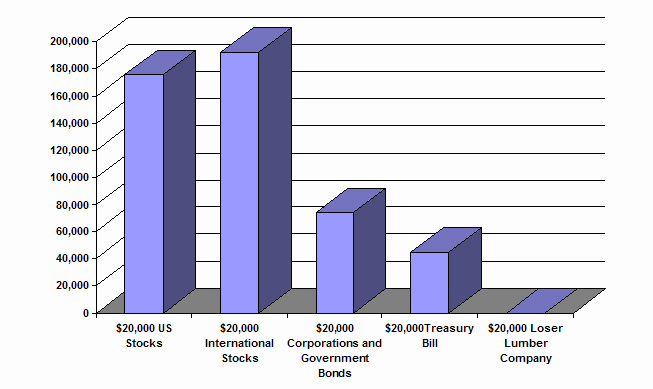Monitor Performance
No One Can Predict Which Investment Will Perform Best or Worst.
Stocks, bonds, global investments and money market instruments all respond differently to changing investment climates. As a result, it makes sense not to
invest 100% of your assets in one or even two of these areas at any one
time. By spreading your assets among several investment types - with different
objectives, growth patterns and time frames - you may protect your assets
against temporary downturns in any one market. In addition, you can help to
balance risk and reward and open opportunities in a greater number of economic,
political and world environments. As you diversify, remember that different
types of investments will have significant differences in risk and return
potential. In general, stocks and bonds - and mutual funds that invest in them -
offer greater risk to capital than certificates of deposit (CDs) or Treasury
bills (which offer insured principle and interest) or money market funds (which
seek stable share prices and have fluctuating yields). Also, the tax features of
different investments will vary.
Use Mutual Funds For Added Diversification
Because mutual funds spread their assets among a number of stocks and/or
bonds, you can benefit from a deeper level of diversification - a decline in one
fund holding can be offset by increases in others. Not only does this further
spread your risk of investing in the stock or bond markets, it allows your money
to be actively managed by professional portfolio managers, trained to recognize
both opportunities and risks.
Scott Jordan is 50 years old. Through hard work and determination Scott has
managed to save $100,000 over the years. Scott wants to retire at age 65, but
feels that in order to retire in comfort, he needs to earn more on his
investments than he is presently earning.
Scott's financial representative has suggested that he put his money in
several investments, each with varying degrees of risk, in order to give his
retirement nest egg the potential to grow faster. Scott asks just one question:
"What if I lose money?" To help reassure Scott, his financial representative
illustrates a scenario in which one of his investments has a 100 percent loss.
As you can see from this historical hypothetical illustration, even with a 100
percent loss from one of Scott's investment choices, his investments in the U.S.
stock market (represented by the Standard & Poor's 500 stock index), the
international stock market (represented by the EAFE international stock index),
the bond market ( represented by a band index) and Treasury bills grew enough
over 15 years to offset his loss.
Scott's Hypothetical Portfolio Grows To Almost Five Times It's Original
Value.

Amount remaining after 15 years:
$175,706 + $192,429 + $73,730 + $44,600 +$0 =
$486,465 (Average Annual growth 9.3%)
Are You Worried About Losing Money in The Stock Market?
Let's face it, if there were a place where we could all earn a solid return
on our investments with little or no risk, you probably wouldn't be reading
this. But often, you may have to accept more risk to seek higher potential
returns than those offered by guaranteed or insured investments.
So What Are Some Of Your Choices?
A. Do nothing and avoid both the risk and the opportunity.
B. Go to Las Vegas and bet your entire life savings on one hand of Blackjack.
C. Put your money under your mattress or bury it in your backyard.
D. Put every penny your have into a high-flying stock that you heard about on
the train the other day.
E. DIVERSIFY by placing a portion of your money in several carefully chosen
investments with varying degrees of risks.
(Choice E offers the best potential for gain without incurring undue risk).
Information excerpted from Investment Basics: Why Diversify? by Kemper Funds,
2000.